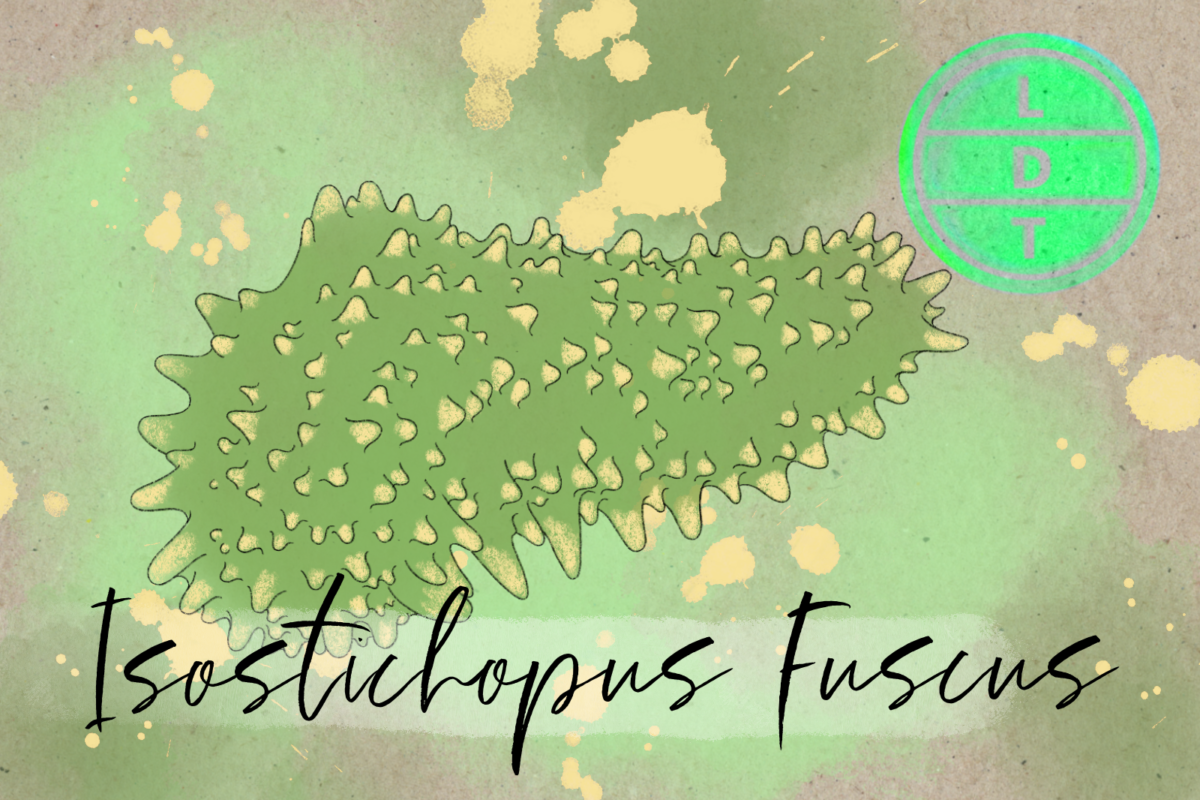“…and today we’re talking about the most romantic sea creature. A brown lump! But more on that later.”
At the bottom of the ocean, a brown lump inches along the coral and sands, keeping its notable lack of eyes out for potential predators. But when trouble does come a-sniffin, the slow sea cucumber has a defense mechanism that takes a heavy toll. Using an ability unique to its phylum, this ocean pickle has a pretty nasty way of staying mostly off the menu. But sometimes you just need to win a pyrrhic victory like the sea cucumber here in Life, Death, and Taxonomy.
Description
- Sea cucumbers are fairly simple lifeforms and they are called cucumbers because of their oval shape.
- The brown sea cucumber has a half dome shape with the middle rising and tapering to the sides.
- Their bodies are covered in evenly spaced bumps or cones that are soft, though they look like spikes.
- Most of the time they are brown, though some could be dark greenish with yellow spikes.
- Males and females are almost identical, except when it’s mating time.
- Cucumber reproductive organs are feathery or spaghetti like appendages that are kept inside the body and can be extended out.
- When they are ready, which is grotesquely called ripe, they change color.
- Males are white and females are orange.
Measure Up
Welcome to the beloved Measure Up segment. The official listener’s favorite part of the show! The part of the show when we present the animal’s size and dimension in relatable terms through a quiz that’s fun for the whole family. It’s also the part of the show that’s introduced by you when you send in audio of yourself saying, singing, or chittering the words Measure Up into ldtaxonomy at gmail dot com. We don’t have a new Measure Up intro!
- Iguana
- Bull Snake
- Soft shelled sea turtle
- Komodo dragon
Length
- 40 cm (15 inches)
- How many sea cucumbers go into the average depth of the shallowest ocean?
- Hint: According to the National Oceanic and Atmospheric Administration (NOAA), the arctic ocean is the smallest and shallowest ocean in the world.
- 14,602.368 sea cucumbers. The arctic has an average depth of 12,000 ft (3,657 m).
Weight
- 830 grams (1.8 pounds)
- How many brown sea cucumbers go into the James Webb Space Telescope weight on earth?
- Hint: Webb has reached the lagrange point two where it is waiting while it cools down before beginning it’s operations. It’s unique among other space telescopes for its ability to see in infrared better than other telescopes like hubble. Infrared technology works better in cool temperatures, which is why Webb has a sophisticated sun shield. One of it’s primary missions is to take deep space pictures, but it may also be able to see dark objects within the solar system, like the theorized Planet X that may be a gravitational influence in the Kuiper belt.
- 7,944.4 cucumbers. The James Webb Space Telescope is 14,300 lbs (6,486 kilograms).
Fast Facts
Sea cucumbers are ocean cleaners. They typically feed on detritus, tiny animals, and algae and they leave behind neat waste on the ocean floor. So, in a sense they are trash collectors and compactors.
They get around with tube feet. Even though they don’t have a muscular system , they move their feet with hydraulics. They have a water vascular system that can inflate and deflate appendages to move them.
Even species without tube feet can contract their bodies to move on the seafloor.
They sort of have bones and a skeleton but not really. Cucumbers have microscopic ossicles that are embedded just beneath the skin to give their bodies some structure and protection.
Many sea cucumbers have respiratory systems that are branched respiratory trees that sap oxygen out of the water.
Sea cucumbers are brainless, but they do have some nerve.
They are a highly sought after food source in east asia, and fishing all over the world is unsustainable. For that reason, they are listed as endangered on the Red List.
Major Fact: Liquid Luck
All echinoderms have something called mutable collagenous tissues (MCT) that act like the nanobots in Marvel. They’re tissues that can change their properties to serve whatever the plot demands. Starfish use it to detach and regenerate their limbs. Sea fans can stiffen to get better filter feeding. Sand dollars can regrow their teeth with it.
Sea cucumbers use MCTs to eviscerate their bowels.
Here is the sentence from the European Synchrotron that sums it up in a nice, understandable way: At the ultrastructural level, MCT consists of spindle-shaped collagen fibrils in an interfibrillar matrix of proteoglycans and noncollageneous proteins like tensilin and stiparin, which along with fibrillin-rich microfibrils comprise the extracellular matrix.
Basically, all animals are made up of quite a bit of collagen, which makes our bones, ligaments, and skin. However, in most things with collagen, like humans, the collagen takes a long time to change once it’s formed.
Things like muscle strengthening or deterioration as well as some of the changes that women undergo during pregnancy are due to gradual changes in collagen. Sea cucumbers can make these changes in seconds.
It also allows them to liquify their intestines and shoot them out of their mouths in order to give the predator something to feed on while the cucumber escapes.
It’s horrifying lovecraftian goodness.
Ending: So get a good score on your MCTs, and always remember to expel your liquid intestines out of your mouth if someone tries to eat you like the sea cucumber here in LDT.

